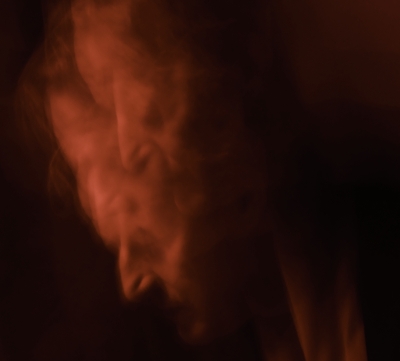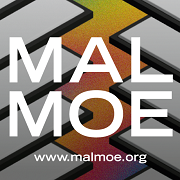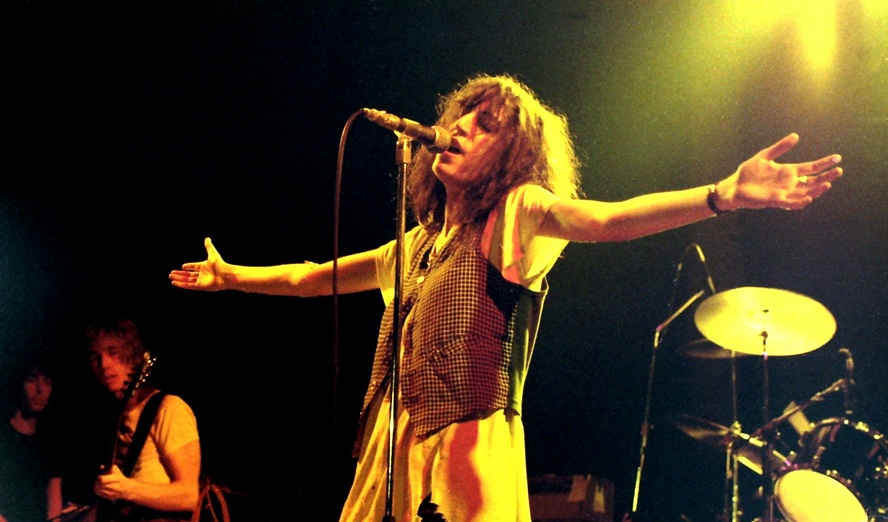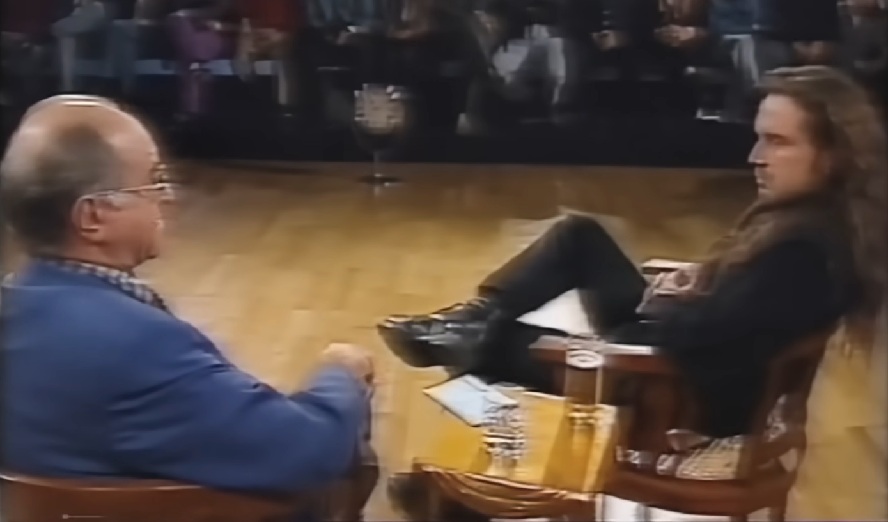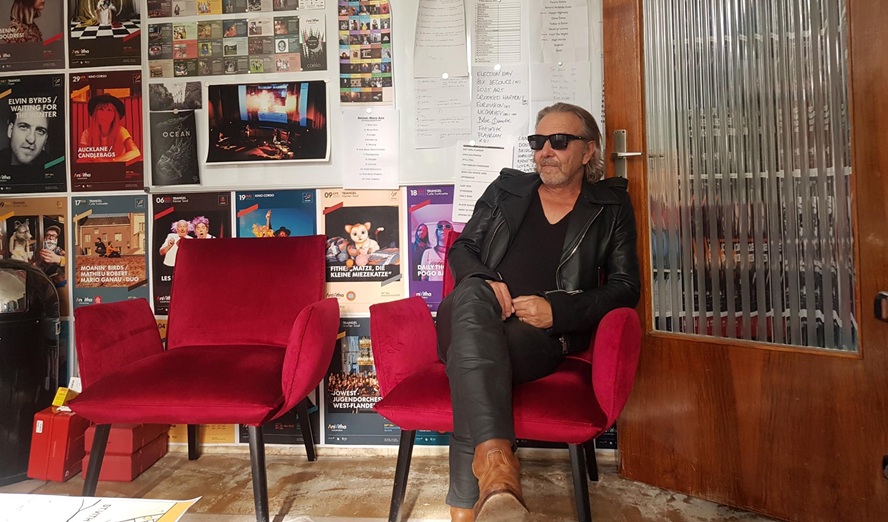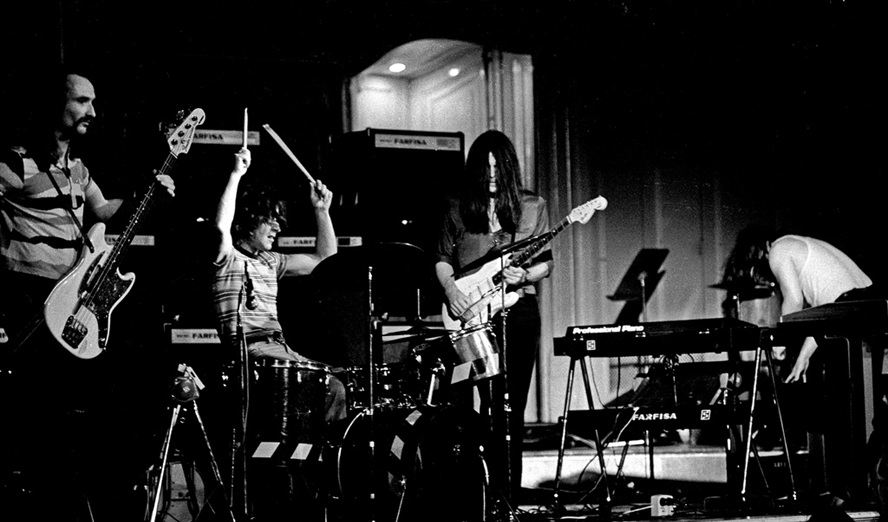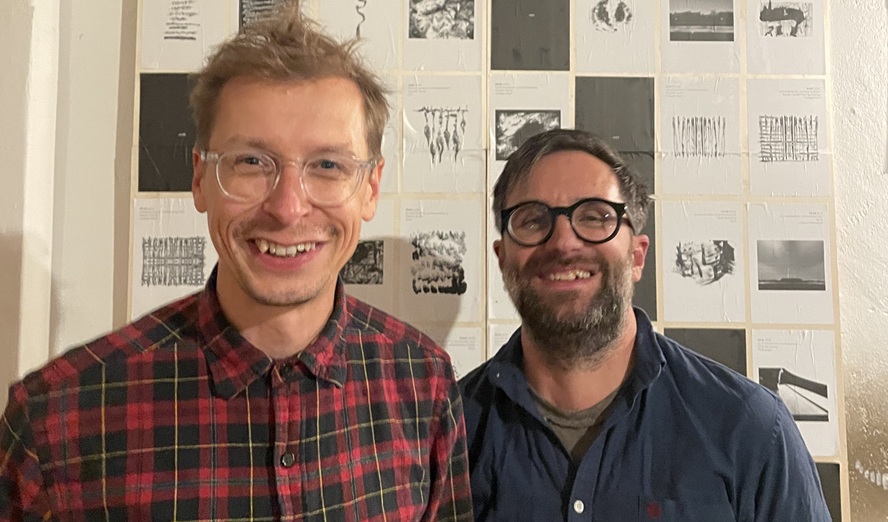Zur Präsentation seines aktuellen Tonträgers »Kryp/Bugs« ließ Hausswolff bei der in der Wiener Secession abgehaltenen »Zone«-Party Ende Oktober Wände wie Besucherkörper vibrieren. Für seine rasiermesserscharfen Sinuswellen reichen dem Musiker, Kurator und Fotografen ein paar Oszillatoren und Filter. Carl Michael von Hausswolff, gerne abgekürzt als CMvH, der Altmeister haptischer Soundforschung, hat mit »Kryp« den dirtten Teil einer losen Veröffentlichungsserie auf Laton herausgebracht, die einmal mehr gesellschaftliche und akustische Randbereiche heraufbe- schwört. So wie »Råttor/Rats« Rattengift und »Maskar/Maggots« eine getrocknete Made beigefügt war, gibt’s in »Kryp« Insektenpulver. Sehr reizend, das. Im so typisch ambivalenten Sinn. Zufall, dass »bug« auch als Abhörgerät oder -wanze übersetzt werden kann? Wohl kaum …
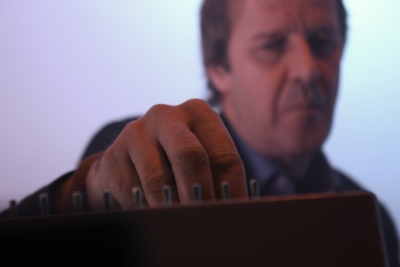
Please tell me about your Laton-CDs?
It’s my interpretation of the sounds when these animals are crawling inside your ears and around you. This means that it’s an artificial, man-made nature. At the same time, since I propose that it’s bugs or rats and you don’t know how the sounds are produced, you actually think that it’s bugs. And this produces antipathy. It’s the same with death: It’s not death in itself I’m afraid of, I’m not afraid of the animal itself, it’s this man-made creation that comes with these things that produce fear. It is a collaboration between Laton and me, me being the investigator. This is also the first time that I put a picture of myself on a CD, I was »brave« enough to do that (laughs). It was Franz Pomassl’s idea to put rat poison in it. I thought it was a good plan because it makes »Rats« more real, it makes the sound and the feeling more real. For »Maggots« we met in Chang Mai in Thailand and went to a store to buy the maggots. And for »Kryp« we went to buy bug poison. There is the idea to make a vinyl collection of all three of them.
Which equipment do you use?
I use a custom designed 12-oscillator bank, radio, filters, scanners and some pre-recorded sounds. I never worked with regular instruments. I was always scared about these machines, I couldn’t figure out how they work. Maybe because I was too shy to ask somebody how they work. So I had to develop my own machines. I work together with Jari Lehtinen, the technician guy who used to customize the machines of PanSonic. I tell him what I want from my instruments. I learned to play guitar and piano a little. I can handle small mixing boards, but these big studio boards totally scare me. I like things simple, that’s why I’m a fan of Aphex Twin: He’s very good at stripping things down. Simplicity still is one of the best tools. If you would talk with Fennesz about Neil Young, for sure he would tell you about the way Young plays his guitar in a simple way. Think for example of Tony Conrad or Phill Niblock.
You are known for your interest in Electronic Voice Phenomena (EVP).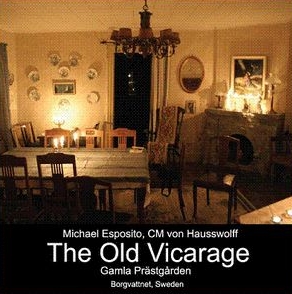
I’m a researcher, not a scientist. Friedrich Jürgenson considered himself as one. Although he was a painter as well. The voices he had recorded were science to him. He had a very hard time proving that there were actually voices from the other side. But nobody could prove him wrong. People like the parapsychologist Hans Bender from Freiburg came up to him in Sweden to prove his statements, but they couldn’t figure out what it was. I never really used Jürgensons techniques to talk to the other side, I used them as an instrumentation or to organize something that I find interesting.
I can recommend the album »The Old Vicarage – Gamla Prästgården« (Fireworks Ed. Rec.), done by Michael Esposito and me. He’s the EVP-man. He’s the antenna. The radio waves contain a lot of varieties to work with, sounds coming from the cosmos (John Duncan), and then you have the wildlife world (Chris Watson, Nilsen, Hasswell). It’s a world still to be explored. It’s not so much about composition but to listen, to enjoy and to discover the beauty inside this brutal world we are living in.
CMvH as a private person: What do you listen to?
When I was young, I had too much respect towards good musicians like Robert Fripp, Frank Zappa and Neil Young. I could call myself a composer, if I want. But at the same time, this is very old fashioned. But if this means taking certain things and organizing them, constructing a certain world, then I would be a composer. When I play live, I am actually very much a musician. Because I have a very good musical ear. I think I could have been a very good musician in a traditional sense, but I’m too lazy (laughs). As a kid, I was too lazy to learn instruments. Let’s say I have a talent for music, but I’m not a musician. The term »music« is very strange nowadays. I mean, there are people who call schlager music, too. These schlager people in a way stole the term music; there are lots of unserious people around who tell others that they play music. So that’s why we have to find words like sound art or organized sounds or whatever. As a composer, you look always for new sounds to work with. Just as Cage presented silence.
What does architecture mean to you?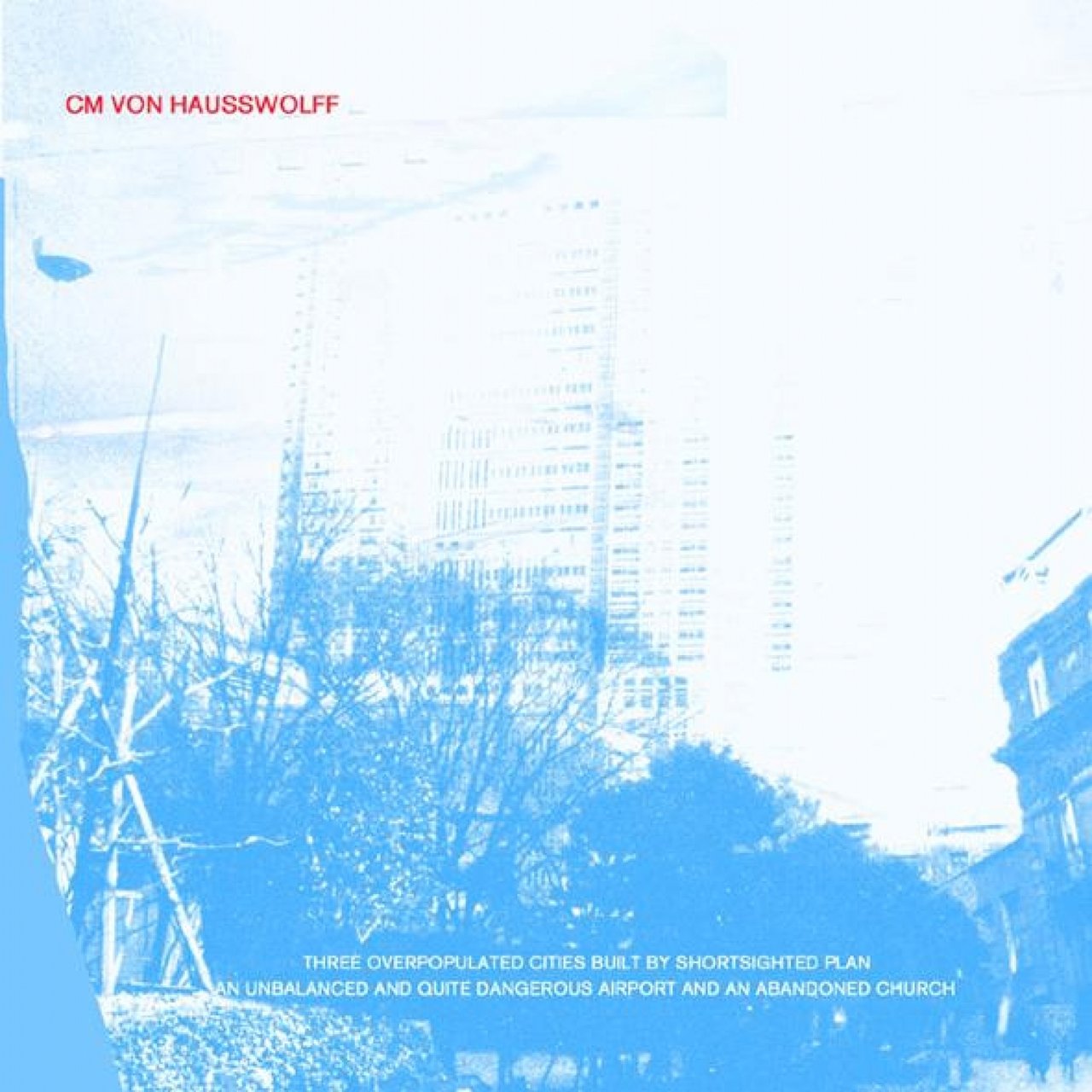
My mother’s husband was an architect. I’m not an architect although I made one house which I constructed together with an architect. Every room has its own musicality. There is no room that has bad acoustics, it just has acoustics. When I’m involved with architecture or urbanism, it mostly deals with criticism. I think most of the houses built nowadays are too small for people. There should be a high ceiling and large space to move around.
But how to do that in crowded areas, in ghettos in the mega-cities? I think they have to deal with other problems than not having houses with ceilings being high enough?
The problem is the idea of the suburbs of the 1950s and 1960s. Architecture should be for people, not about fancy things like the Guggenheim museum in Balboa or whatever. I’m talking about real places people should live in. The architects who build these houses never ever would live there themselves. They live in a fancy big house somewhere else; they never would live in houses like those they have built. Suburbs are like human farms having the purpose to produce something for somebody else. That’s why my album »Disturbances« starts with a voice extract by Buckminster Fuller. If you go to 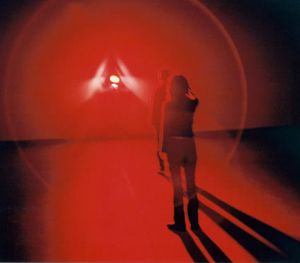 Bangkok, Lagos, Cairo or Mexico City, these cities are totally fascinating but it is a kind of organic growth. So I created pieces that start with a small little tone and are feedbacked endlessly. In a way it’s like a cancer. It’s an audio image of something that is growing from a tiny sine beep to these homunculus-like, massive sounds.
Bangkok, Lagos, Cairo or Mexico City, these cities are totally fascinating but it is a kind of organic growth. So I created pieces that start with a small little tone and are feedbacked endlessly. In a way it’s like a cancer. It’s an audio image of something that is growing from a tiny sine beep to these homunculus-like, massive sounds.
Where are connections between frequencies and the body?
If you have a bad sound system, to work with low frequencies can be difficult, it will cut or even not play them. Various frequencies correspond to various regions of the body. The low frequencies
are: heart, internals and sexual units. Mid-range frequencies are connected to the neck and the high frequencies to the head. You can do a whole cartography of the body out of sound. Sounds work like tools; there are many sounds that still have to be discovered. Sound is one of the least explored media in arts in terms of frequency references: What do frequencies correspond to? How do they treat the surroundings? Frequencies produce a surplus when they are combined. In warfare and in torture techniques, there are experiments with low frequencies and volume. The problem with sound guns is: On the outside of the demonstrator you don’t see any harm but you don’t know how it affects the internals or the psyche of them.
I read that some people consider you a sound-»terrorist«.
I think to be a terrorist in some occasions can be OK. There is a reason why people like the RAF or the Taliban do this. They are protesters, fed up with the Western influence or whatever and want to be left alone with their ideas. Unfortunately they use brutal methods for to reach that goal. But it’s not my point of view to be a terrorist. I never liked this intention for e. g. just to shock. I don’t like intentional provocation because I think it falls very flat and doesn’t have depth. This idea me being a sound-»terrorist« comes maybe from situations where I was able to match the physical and acoustic qualities of the space with the low frequency sine waves. So you could feel the whole content of the sound in your body. And maybe these people didn’t experience that before. That’s how you could feel assaulted. I consider myself more an infiltrator. I don’t believe in political confrontation, I believe in political infiltration.
Sounds like Burroughs … 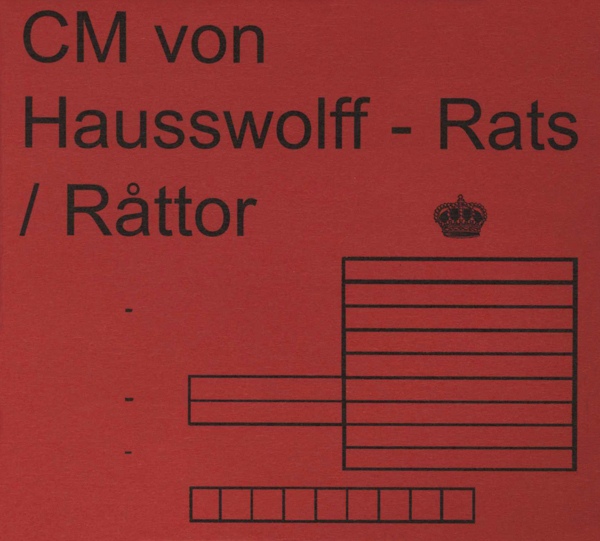
Right. Like Burroughs‘ idea of the »virus in the system«. But Burroughs was complaining that somebody else would have put the virus in the system. He was paranoid. But he also said: »If you are not a bit paranoid, you have to be sick.« He was healthly paranoid. I’m not into conspiracy theories, but I like to work things from the inside rather than a frontal attack. The 20.th century has proven that with frontal attack you always lose. You have to change things; I don’t have any solutions for that …
And Gysin?
I knew Brion Gysin, too. He was a big influence on me. I curated a show with him in Stockholm some years ago; it was based on his influence on the music and art world. I showed a film that I had done around the location of Alamut and about Hasan-i Sabbah. I think Gysin was a very egocentric and independent person. At the same time he was a sweet person to meet and to hang out with, he was full of stories. Now he is represented in many group shows, his dream machine is shown everywhere, but I think he’s still much underrated. I think that Burroughs got lots of ideas from him.
You work also as a curator for sound art. What are some principles to keep in mind when presenting it?
First of all: It is very difficult to present a group show of sound installations in the context of a museum, because most sound pieces are not meant to be in such a context. If the pieces deal with the same range of frequencies, they will wipe out each other and you won’t experience anything. If you build rooms for every sound art work, you can do that. But of course this is too costly. I was in some group shows and it was terrible, because the curators forgot about the sound interferences. They would build up all the pieces, put on all the sounds and suddenly it was like: shit, a big mess. You can do it by having e. g. 12 art pieces in one room but they have to have different frequencies. Like: One deals with 0-25Hz, the next 25-50Hz etc. By dividing you can play each piece individually without to interfere, because from a standpoint of frequencies you are able to define the artists and at the same time you have all the artists playing together.  This is what I do with my orchestra Freq_out. We did around seven exhibitions so far. If you don’t have these spatial facilities, you have to use headphones, otherwise it will be impossible as sound travels. It has to be curated in the right way, otherwise it’s just bullshit. A sound installation in not a picture. And I don’t think that visual curators can do that unless they educate themselves. They have to go back to school (laughs).
This is what I do with my orchestra Freq_out. We did around seven exhibitions so far. If you don’t have these spatial facilities, you have to use headphones, otherwise it will be impossible as sound travels. It has to be curated in the right way, otherwise it’s just bullshit. A sound installation in not a picture. And I don’t think that visual curators can do that unless they educate themselves. They have to go back to school (laughs).
How do you consider the shift from the analogue to the digital era?
I don’t consider MP3-technology as relevant for me. I think it would be nice living in a world where everybody can do music, do art, be happy and live in a nice place. From that point of view, this development is really great. As many as possible should have access to these tools with which you can produce something you like to hear for yourself. But I have the impression that there are many people who don’t produce music they want to listen to but they do things they think somebody else wants to hear. And I think this is a problem. They just project themselves on somebody else; acknowledgement by somebody else. People started doing things because they wanted to listen to something different. I’m not worried about survival from that point of view. Because artists in general will always find ways to do what they want to do. Yes, there is lots of music that is very accessible, but lots of people will fall out. They realize that they are not into it and will stop. Because it’s so new, so many people are doing it. The accessibility is new. It is a trend that will die. But of course I like it if as many people as possible are creative. It’s better being creative in doing music than being creative in doing advertising or selling drugs or guns. Everybody is so afraid that this record industry will die: I hope it will die! Because the majors, they really had it. They had their fun, they put out some great music, but they released tons of bullshit. They have tagged their own grave, because they are so afraid of new music that they shit in their pants. But artists will do their thing anyway. 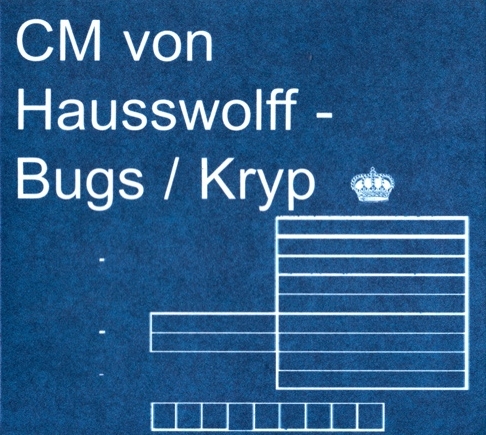 The discussion about MP3 reminds me to the 1970s when the cassette came around: The big record companies were really scared. But on the contrary, they sold more records, because people wanted to have a physical object. I think that people always want a physical object. It’s like with »Bugs«: It’s not simply sound, it’s an art object, it’s like a sculpture, and I think we will see more things like that. Maybe you have some small pocket sound installations, who knows. Artists will come up with things the record companies not even would dare to dream of.
The discussion about MP3 reminds me to the 1970s when the cassette came around: The big record companies were really scared. But on the contrary, they sold more records, because people wanted to have a physical object. I think that people always want a physical object. It’s like with »Bugs«: It’s not simply sound, it’s an art object, it’s like a sculpture, and I think we will see more things like that. Maybe you have some small pocket sound installations, who knows. Artists will come up with things the record companies not even would dare to dream of.
Maybe I sound very idealistic, but I believe in art. I’m convinced that art can do something for people. It can be a good antidote for the bad things going on in this world. And I think that in general art people are nice people. Of course there is also something like »evil« art. But most artists want to make a progress and develop something. That’s why many cutting edge musicians push the limits of music. They want to destroy the walls of limitation of what you call music. It’s not about being as radical or anti as possible towards society or tradition, it’s about to expand your own inner self and your own mind. Humans are fantastic in the way of to develop, but on the other hand they are horrible in killing each other. Artists will turn this commercial, digital dilemma into something else. I don’t k
now what that will be. Taken a current example: Many software programmes have made artists investigate again analogue equipment and using it in a totally different way than they used it in the 1960s or 1970s. It opens up new ways of thinking.
